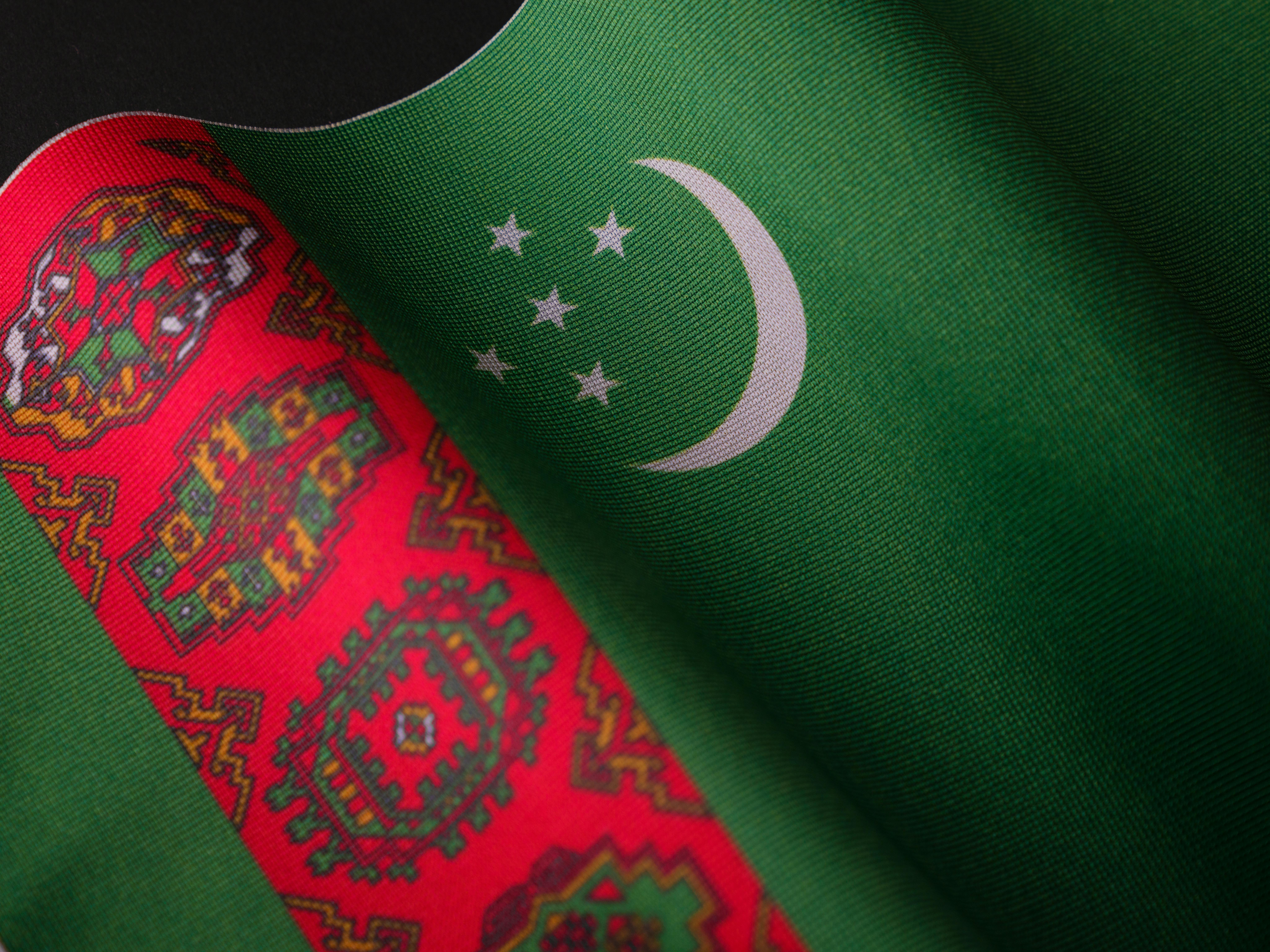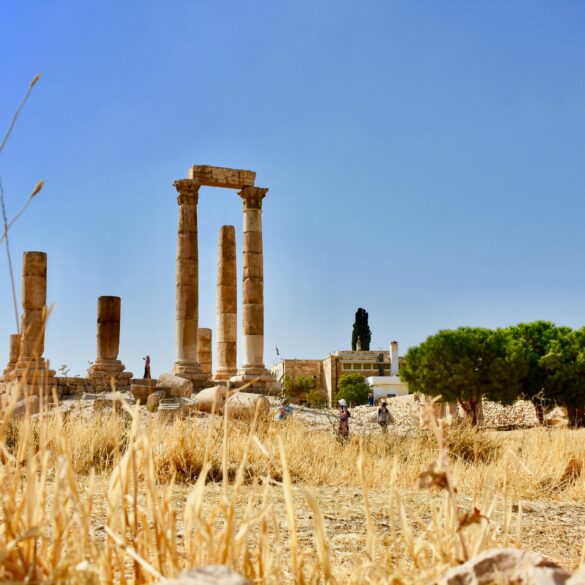Turkmenistan Country Profile: A Deep Dive into Culture, Travel, and Modern Identity
Let me set the stage. Some years ago, I found myself poring over a battered atlas, running my fingers across Central Asia’s great expanse. One country—a land my teachers barely mentioned, whose name hardly cropped up in travel circles—stood out: Turkmenistan. It read almost mythical. Fast forward, and here I am, sharing an all-access country profile based on stacked research, real travel, and a fair few “wait, is this real?” moments. I’ll be honest—Turkmenistan is not your typical destination, nor is it a cookie-cutter post-Soviet state. It’s a modern paradox: opulent yet secretive, welcoming yet tightly guarded, steeped in desert tradition yet streaked with futuristic cityscapes. Here’s what I’ve learned, what still puzzles me, and what I sincerely believe the world misses when they overlook Turkmenistan.
Why Turkmenistan Matters (And Why the World Looks Away)
Ever ask yourself why we hear more about Kazakhstan’s steppe, Uzbekistan’s Silk Road cities, or Kyrgyzstan’s nomadic mountains? Here’s the thing—the world rarely looks Turkmenistan’s way, not because there’s nothing to discover, but because the country works hard to keep its curtains drawn. Honestly, the secrecy is legendary: landing a visa rivals a Cold War spy thriller. Yet, beneath this careful façade is a country at the crossroads—of geography, history, resource politics, and culture.
“Turkmenistan is one of the most closed countries in the world, but its impact on regional security, energy, and identity far exceeds its global visibility.”
Geographically, the country dominates the great Kara Kum desert, spans from the Iranian frontier to the Caspian Sea, and acts as a vital link in contemporary Eurasian trade. Its population barely scratches 6.2 million, but the vast majority are ethnically Turkmen—resulting in remarkable cultural continuity, an unbroken thread from ancient Silk Road days to today’s marble-stacked capital. It’s also one of the most energy-rich countries per capita—second only to Qatar in natural gas reserves globally2. But here’s the paradox: that wealth exists alongside striking poverty, Soviet echo chambers, and a rigid political system engineered for maximum control and minimum transparency. That blend, I’d argue, makes Turkmenistan essential study for anyone curious about closed societies, energy geopolitics, or lost cultural lineages.
What really strikes me—Turkmenistan’s blend of ancient tradition, authoritarian modernity, and economic opulence is unmatched in Central Asia. You feel it in the echo of the Silk Road, the surreal architecture, the omnipresent portraits of the president. There’s no experience quite like it—anywhere.
Roots: Turkmenistan’s History & National Identity
To understand Turkmenistan, you need to grasp the power of memory and myth. The country’s ancestors—Turkmen tribes—were once feared horsemen, dominating the desert from the Caspian eastward, shaping trade and warfare across centuries3. During Soviet times, the republic was given its borders, language, and even elements of modern costume by Moscow’s central planners, an “identity construction” seen elsewhere in the region. After independence in 1991, Turkmenistan veered sharply from its post-Soviet cousins. President Saparmurat Niyazov—who dubbed himself “Turkmenbashi” or “Leader of all Turkmen”—choreographed a wild, personality-driven nationalism: renaming months, erecting golden statues, even authoring his own spiritual guidebook, the Ruhnama4.
Nowadays, you’ll hear locals recite poetry in the smoky bazaars, spot ancient carpet motifs worked into public murals, and find that family and clan still mean everything. But there’s another truth: government closely manages expressions of the past, fusing myth and propaganda, so it’s important not to confuse state narrative with ground reality. When I visited Ashgabat in 2018 (right before the pandemic upended travel), the contrast between the “official” Turkmenistan—gleaming white marble, synchronized fountains, grandiose government slogans—and everyday life couldn’t have been more stark.
Turkmenistan is home to the world’s largest indoor Ferris wheel and boasts more white marble buildings per capita than any other city, all in its capital, Ashgabat. That’s according to the Guinness World Records, not just local lore5.
Travel Highlights & Natural Wonder: Why Go?
Okay, time for some honest reflection: Most people (my former self included) don’t even know how to spell Turkmenistan, let alone why you’d visit. The country has spent decades limiting outside influences, so it makes sense that even veteran travelers put it low on their bucket lists. But, here’s my take—if you’re craving authenticity, untouched landscapes, and stories you’ll retell for a lifetime, few places compare.
- The Gates of Hell (Darvaza Gas Crater): Easily Turkmenistan’s most famous site, a blazing, methane-fueled pit in the middle of the desert. It’s been burning—uninterrupted—since 1971, the result of a Soviet drilling mishap. Camping here under the stars, with nothing but fire-light and silence? Unforgettable6.
- Ashgabat: The capital feels more like Vegas-meets-Disney than your typical Central Asian city: pristine marble, gigantic public monuments, empty boulevards, and choreographed fountains. The city’s eeriness is compounded by tight security and near-total absence of street life after dusk.
- Ancient Merv: A UNESCO site, once among the world’s largest cities and a Silk Road legend. If you’re a history romantic, Merv delivers vast walls, labyrinthine ruins, and the ghosts of empires—a location that truly lets you touch lost centuries7.
- Kunya-Urgench: Another World Heritage site, echoing the era when this region was among the world’s richest and most advanced8.
- Kopet Dag Mountains: Where Persia meets the desert, and the landscapes can only be described as “postcard dramatic.”
Pack for temperature extremes. Summer highs soar above 45°C (113°F); winter can see snow in the capital. Layer up, budget for bottled water, and—critically—carry local cash. ATMs are rare, and credit cards outside top hotels are, honestly, not worth the plastic9.
“There’s nothing like standing alone at Darvaza, feeling heat on your face and absolute silence pressing in. It’s one of those rare moments where you sense humanity’s smallness—and, oddly, our ingenuity gone wrong.”
Culture, People & Daily Life: What You’ll Actually Experience
Here’s something not everyone will admit: Turkmen daily life is a blend of conservative hospitality, rigid officialdom, and lighthearted (sometimes sly) humor beneath the surface. In bazaars, people will joke in whispered tones about Ashgabat’s latest statues. At home, tea circles mean everything. Extended family is the center of life, and respect for elders runs deep. I’ve found that behind every “official” answer, locals have their own version of the truth, and connecting with them takes patience but is so, so rewarding.
- Traditional dress—vivid, beautifully embroidered for women, felt caps for men—is common, especially outside the capital.
- Horse culture is practically sacrosanct. The Akhal-Teke, Turkmenistan’s native horse, is the world’s oldest domesticated breed—sometimes called “Heaven’s horses”—and commands reverence akin to royalty10.
- Language: Turkmen is dominant, Russian remains a second language in government and education, and bits of Uzbek, Farsi, and even English surface in larger towns.
- Food: Plov (rice, meat, carrots), hearty soups, and, yes, endless bread and tea.
- Public displays of dissent or political discussion are nearly non-existent, and internet (as of 2024) is both censored and painfully slow11.
It’s easy to romanticize Turkmenistan as a frozen-in-time nomad society. But, what really strikes me is the balancing act: hyper-modern urbanity in the capital versus the ancient, rhythm-driven existence of desert villages. Honestly, nowhere else have I felt such a strong sense of both old and new—simultaneously celebrated and tightly regulated.
I have to say, real Turkmen warmth shows up in the little moments—when someone offers you melon in the shade, or when a local camel herder quotes classic Turkmen poetry. Don’t expect flashy hospitality; instead, look for quiet acts of respect and rare, but unforgettable, shared laughter. It’s these moments that have left the lasting impression on me—far more than any marble monument.
The Modern Economy: Gas, Silk Roads, and Surprising Trends
Ask most economists what defines Turkmenistan, and the answer is short: Natural gas. The country’s Galkynysh Field is among the world’s largest, exporting vast quantities to China, Russia, and, to a dwindling extent, Iran. What’s wild (frankly, frustrating) is just how little of this wealth trickles down—economic inequality is visible, and if you scrape past the Ashgabat gloss, persistent poverty emerges in rural regions12.
| Sector | 2023 GDP Contribution (%) | Key Exports | Major Trading Partners |
|---|---|---|---|
| Natural Gas & Oil | ~35% | Natural gas, petroleum products | China, Russia, Turkey |
| Agriculture | ~11% | Cotton, wheat, melons | Iran, Afghanistan, EU |
| Manufacturing | ~7% | Textiles, fertilizers, carpets | Turkey, India |
Massive state spending goes into city-building (marble, glass, fountains), yet structural reforms lag, and foreign investment outside regulated energy is still rare. I’ve consistently found that, as you talk with younger Turkmen, there’s a real hunger for more diverse opportunity—a sense that the country is both blessed and, in some ways, boxed in by its mineral wealth.

Challenges, Change & The Future of Turkmenistan
Where do we even start? Turkmenistan faces a double-edged sword: global irrelevance (on the surface) gives it the “luxury” to tightly govern its population and control information, but it also stymies innovation, limits economic resilience, and, frankly, makes crisis response a gamble. Take the COVID-19 pandemic, for example: The government denied any cases existed in-country for nearly two years, a claim widely doubted by the global health community13. International agencies—WHO included—reported “respiratory illnesses consistent with COVID-19.” The result? A strange mix of isolation and improvisation, as locals adapted, underground support networks blossomed, and trust in official information plummeted.
“The lack of transparency poses a significant risk, but also spurs community-driven innovations beneath the official radar.”
Infrastructure projects are booming, but youth emigration is rising. The disconnect between grand state ambition and everyday limitations means that many young Turkmen see Russia, Turkey, or even Ukraine as logical next steps for career or education. Meanwhile, the government invests billions into “neutrality diplomacy,” energy diversification deals, and new trade corridors with South Asia and the Middle East. The future? It’s truly, honestly, up for grabs—a rare state that simultaneously fears and craves global integration.
Key Contemporary Issues
- Political Opacity: Consecutive presidents (Niyazov, then Berdimuhamedow, now his son) have prioritized stability and top-down modernization at the cost of civil liberties15.
- Restricted Media: International reporters rarely obtain visas, internet is both expensive and state-filtered, and dissent—even mild—can mean police attention.
- Environmental Strains: Soviet (and post-Soviet) irrigation schemes have devastated parts of the Amu Darya delta and contributed to the retreat of the Aral Sea. Desertification is a looming threat, as are periodically severe droughts16.
- Healthcare Access: Official stats look good but independent reporting suggests rural medical access is patchy and under-resourced17.
If you’re used to fast-paced reforms in the Baltics or South Caucasus, Turkmenistan’s gradualism—measured sometimes in centimeters, not kilometers—can feel downright glacial. But I’d argue that there’s more dynamism under the surface than appears at first glance. My thinking here has evolved: real progress may look less like Western “democratization” and more like expanded space for local entrepreneurship, gradual media liberalization, or broader exposure to global education and commerce.
Planning Your Visit: Visas, Costs & Cultural Sensitivity
All right, let’s get practical for a second. Getting into Turkmenistan is an adventure in its own right—possibly the hardest in Central Asia. Visa requirements are strict; you almost always need a letter of invitation (LOI), and an official guide is mandatory for most itineraries. Expect background checks, bureaucratic delays, and (occasionally) outright rejection, even with all paperwork in order18. I’ve learned this through trial, error, and lots (I mean lots) of patient emailing.
- Plan 2-3 months in advance for paperwork, especially during holidays or election periods.
- Be ready for persistent security checks; always have your passport and (ideally) a local contact’s number handy.
- Negotiating price? Bargain softly: outright haggling is rare, and public disputes are frowned upon.
- Dress modestly, especially outside Ashgabat. Women travelers: headscarves aren’t required but signal respect in rural areas.
- Photography is restricted around government buildings—even the outside of some public spaces. Err on the side of caution, always.
Costs range widely. Budget travelers can scrape by at $40–50/day with tight control; mid-range guided trips more often run $150–250 per day (or more) per person. Cash remains king; bring new USD bills for exchange, as torn or marked notes are often rejected.
Turkmenistan is the world’s fourth most-populous country without McDonald’s—joining North Korea, Yemen, and (recently) Macedonia in this rare club. Want “global” flavors? Try local samsa and melon in the markets instead!
Frequently Asked Questions: “People Also Ask” Quick Reference
| Question | Quick Answer |
|---|---|
| Is Turkmenistan safe to visit? | Yes, generally very safe for tourists, with low rates of street crime. But, official surveillance is strict. |
| Do I need a visa? | Almost always, yes. Apply early; process is slow and can be arbitrary. |
| Can I travel independently? | Technically possible, but a local guide is mandatory in most cases. Some border regions are completely off-limits. |
| When is the best time to visit? | Spring (April–June) and autumn (September–October) for mild weather and festival season. |
Country Facts + Quickfire Stats
Let’s bring it home with a handful of facts—some serious, a few delightfully odd:
- Population: ~6.3 million (2023 est.)19
- Area: 488,100 sq km (70% desert)
- Religion: Predominantly Sunni Islam, with small Christian minorities.
- Exports: Natural gas (mostly to China), cotton, textiles, carpets.
- Global Quirk: Turkmenistan celebrates its own “Melon Day” every August; the president throws a festival centered on—no joke—melon displays, tastings, and poetry.
- Time Zone: UTC+5 (no daylight saving time)
- Language: Turkmen (official), Russian (widely spoken), minor Uzbek/Farsi/English in urban areas.
“National pride in Turkmenistan echoes from the festival fields to the presidential palaces—where horses, carpets, and homegrown melons matter just as much as any marble monument.”
Concluding Thoughts: Why Turkmenistan Is Worth Your Curiosity
So, why does Turkmenistan deserve more attention than it receives? For me, the answer boils down to this: it’s one of the last truly “unknown” spaces where every layer you peel back—be it historical, cultural, or political—reveals something more complex and, honestly, more fascinating than the clichés. I won’t pretend there’s not uncertainty; sometimes, the real story’s filtered through bureaucracy or myth. But isn’t that what makes cultural discovery so rewarding?
If you’re seeking the kind of travel, research, or curiosity that pushes you out of your comfort zone—where language, custom, and even the local news will challenge you—Turkmenistan is unmatched. (Just remember, patience, humility, and adaptability go a long way here.)
I’ll finish with this: my time in Turkmenistan—however brief, and however carefully guided—changed what I thought I understood about Central Asia. It’s not just the surreal architecture or the crackling campfires beside Darvaza. It’s the spirit of a place holding tight to tradition while navigating the pressures of the modern world, in ways that defy expectation.
References & Further Reading



